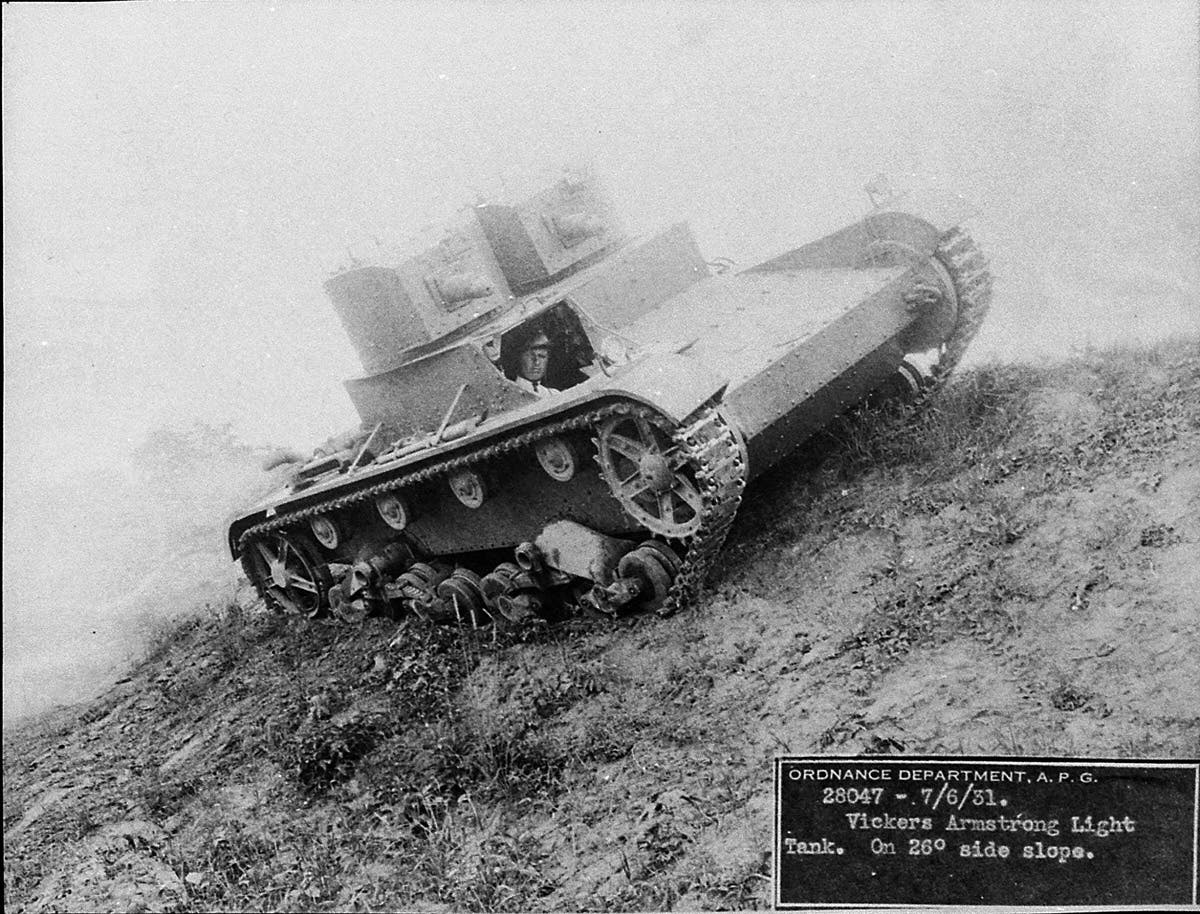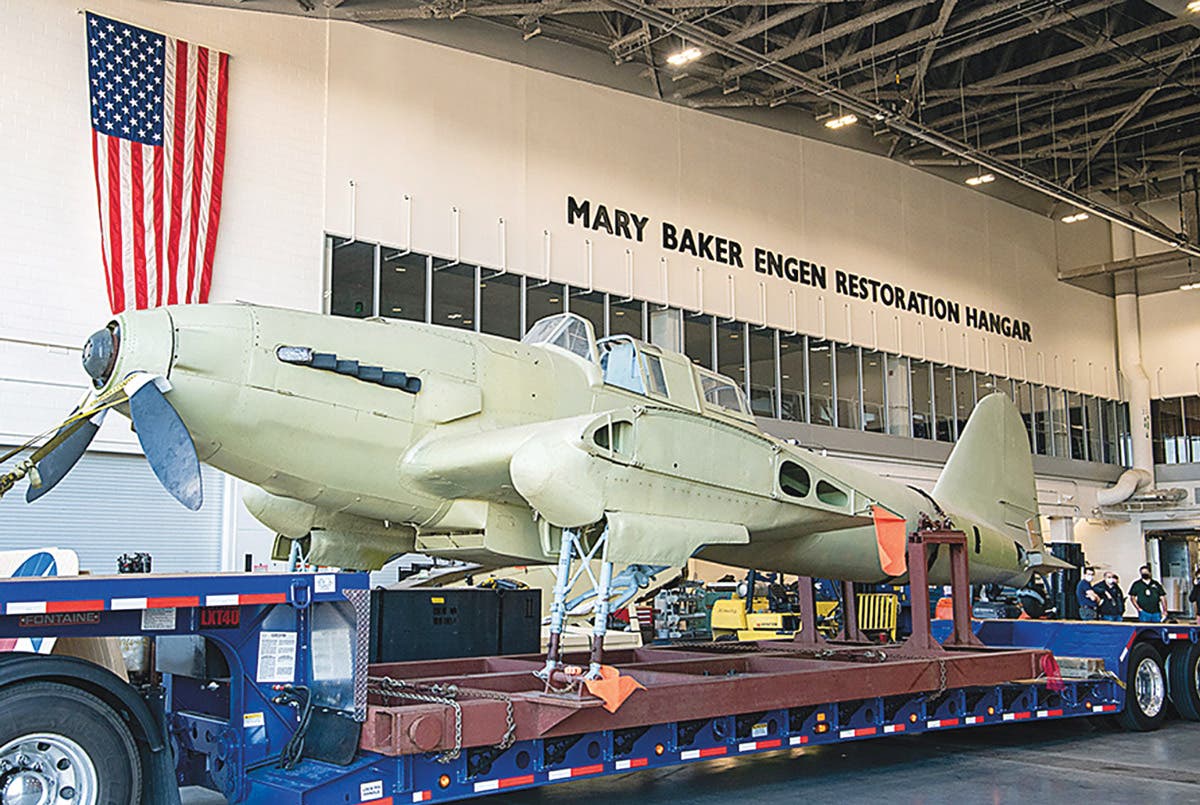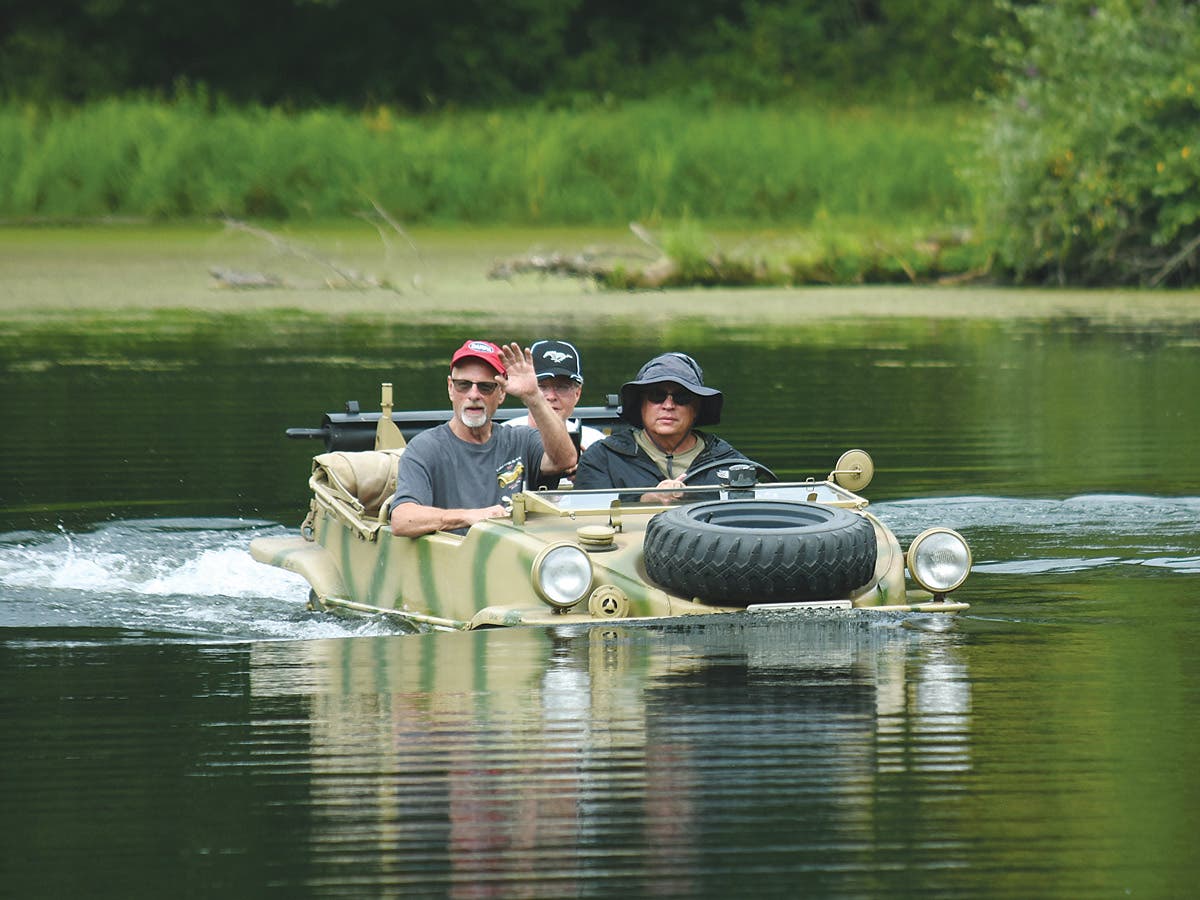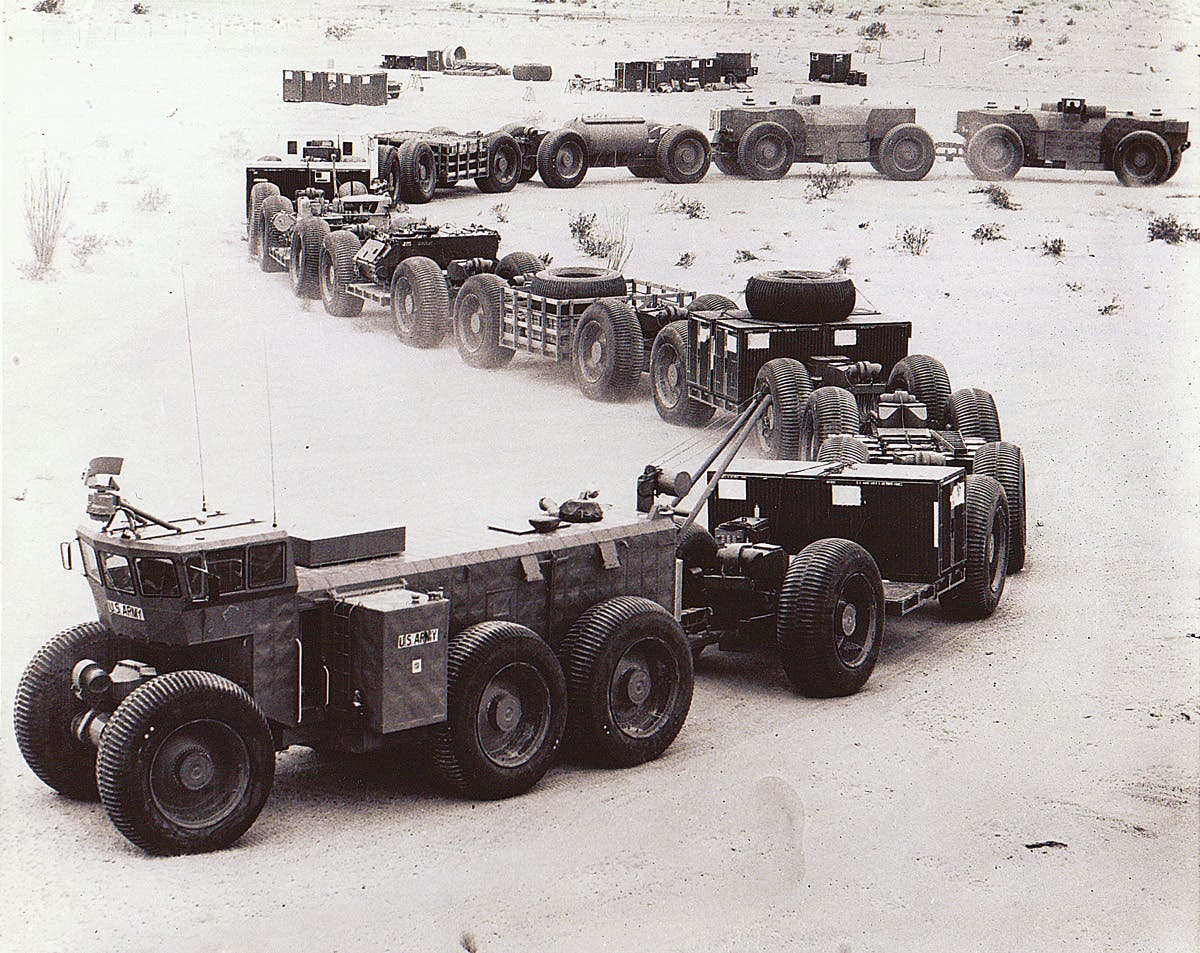So, you want to buy a Sherman tank?
Everyone says they want to buy a tank, but what do you need to know before purchasing a WWII military vehicle?
Brought to you by
M4A3 "Sherman" Medium Tank
One of the most popular vehicles for historic military vehicle ("HMV") enthusiasts, but probably the least collected is the Sherman tank. Everyone says they want a Sherman tank—that is, until they see what one costs to buy and maintain. Nevertheless, just so you know what you are in for, here is a brief rundown of one of the most popularly exclaimed responses to the question, “What’s your dream-HMV?”
The Sherman tank is remembered as the tank that won World War II for the United States and its allies. Even now, decades after the war, “Sherman Tank” is an instantly recognizable term with the general public.
But the term “Sherman” tank describes not one type of vehicle, but several distinctive variations. The M4 Sherman replaced the M3 Medium Tank. It is no surprise that the power plants of many early U.S. tanks, including the M3 and M4 medium tanks, were based on aircraft engines. The variant of the Sherman that came to be “America’s tank” was the M4A3. The engine installed in the M4A3 was the Ford-designed and -built model GAA V-8 liquid-cooled gasoline engine.
Ford began production of the M4A3 in May 1942, although Ford’s production of the tank would be relatively short lived. (Ford M4A3 production ended in September 1943). M4A3 and variant production was continued by Fisher Tank Arsenal and Chrysler’s Detroit Tank Arsenal until eventually reaching a total of 12,596 units.
BASIC SPECS
Weight: 66,700 pounds (fighting weight)
Size (LxWxH): 232.5” x 103” x 108”
Max Speed: 26 mph
Range: 130 miles
POINTS TO CONSIDER BEFORE YOU BUY
It might sound funny, but many people who bought a large historic military vehicle (HMV) didn't know how large it was until they got it home! Keep in mind that any vehicle looks smaller in pictures, and most large vehicles appear smaller when viewed out in wide open spaces, or perhaps in a dealer's lot.
While there is certainly nothing wrong with acquiring an HMV, it is important that you to the homework before buying. Being prepared should prevent nasty shocks when it comes time to change your new vehicle's engine oil, give it a lube job, buy new tracks, have it trucked to a show, or simply fill up the fuel tank.
Any HMV owner should consider possible breakdowns, major parts replacement — such as engines, transmissions, axles or transfer-cases—and major repairs beyond the scope of one's home shop or garage. Such unexpected vehicle expenses could be compared to taking a child to a doctor when Band-Aids at home won't suffice.
The HMV owner on a budget will be wise to shop for quantity without compromising quality. You may be accustomed to buying five quarts of oil and a filter for your car at an auto-mart store. Yet, if you were to purchase the same oil in a five-gallon tub or a fifty-five gallon drum at an oil company depot, the price per quart might be half of what the auto-mart charges. This also applies to gear oil and chassis grease — usually much cheaper per quart or tube in tubs, drums, and cases — as well as brake fluid in gallon-size cans. Of course, the initial cost of such things is much higher, but the price in the long run is far lower.
When buying lubricants in bulk, you also need the right equipment to get those lubricants into one's vehicle. You might begin by planning how you're going to get a 55-gallon drum of oil out of your pickup and into your shop after you get it home. Then, you will need oil filler cans, pumps, funnels and grease guns. Likewise, you will need pans and containers for draining old lubricants out of your vehicle. You should also plan for the disposal of old lubricants; and if you're buying them new from an oil depot, this is usually not a problem.
An additional bonus in dealing with a wholesaler or oil depot is that many such places also offer top-quality batteries at lower than auto-mart prices. Oil depots may also offer fuel and oil filters at low case prices. Likewise, bearings may usually be found at bearing houses much cheaper than at auto parts stores. The same applies to businesses that specialize in things such as hoses, drive belts, fittings and brake parts. Most such businesses can reline any kind of brake shoe regardless of vintage.
Therefore, if you are considering a tank for purchase you should do the usual homework. This includes acquiring a thorough knowledge of the type of vehicle you want— its average purchase price, parts availability, safe highway transport, service and maintenance requirements, and any common quirks or faults.
The basic takeaway, though, is this: EVERYTHING on a Sherman is heavier, larger, and more expensive than you have imagined. Owning the beast is one thing, being able to take care of it is another matter that you must budget and plan for.
MAKE YOUR TANK LEGAL
Another thing that some folks don't consider when buying a large vehicle are license requirements, both for the vehicle and for its driver. Vehicle license laws vary a lot from state to state, as well as how strictly they are interpreted or enforced. Before you buy, make sure you can legally store and drive your vehicle in the location where you plan to keep it.
Many states determine vehicle and driver's license requirements, as well as fees, based on vehicle weight. Of course, most of these laws apply to commercial vehicles, and many states have made new laws to accommodate historical, vintage, or classic vehicles. Most states seem to define a "classic" or "historical" vehicle based on its age. This may be an important thing to consider if you're shopping for one of the newer deuces or 5-ton trucks.
That big gun on the front and the machine guns might be made inoperable, bu the person on the street doesn't know that. Make sure you inform your law enforcement that you plan to take the Sherman out for a drive. If you don't, you might encounter some very forceful interrogation as the result of uniformed public panic.
CONDITION & RARITY
Military Trader & Vehicles magazine uses a given a value based on a 1-to-6 condition grading scale as follows:
1=Excellent: Restored to maximum professional standards, or a near-perfect original.
2=Fine: Well-restored, or a combination of superior restoration and excellent original parts.
3=Very Good: Complete and operable original or older restoration, or a very good amateur restoration with all presentable and serviceable parts inside and out.
4=Good: Functional or needing only minor work to be functional. Also, a deteriorated restoration or poor amateur restoration.
5=Restorable: Needs complete restoration of body, chassis, and interior. May or may not be running, but is not wrecked, weathered or stripped to the point of being useful only for parts.
6=Parts Vehicle: Deteriorated beyond the point of restoration.
Like any collectible vehicle, the price of an HMV is based on a combination of three factors: condition, rarity, and popularity. A vehicle can be extremely uncommon but if it isn’t interesting, it won’t be as valuable as an equally uncommon, popular vehicle.
Rarity is, of course, initially driven by production quantity. Survivability and accessibility also impacts rarity. The rarity of vehicles in this guide are rated on a scale of 1 through 5, with 1 being the most common and 5 being the scarcest.
Popularity is harder to measure. Basically, if a vehicle was "popular" during its time of service, it will have a strong nostalgic pull with later generations. Jeeps are "popular" because so many soldiers interacted with them. CCKW ponton carriers, while scarce, are not as "popular" because fewer soldiers had direct experience with them.
But the single factor that drives price is — and will always be — condition. Not only does condition affect the price of a given vehicle, it also affects its collectibility. Another factor closely related is the quality of restoration.
A preserved vehicle is maintained in a “state of suspended animation.” All the flaws, scratches and rust that are present when the vehicle is “discovered” are preserved. While this style of collecting is more popular with vehicle enthusiasts overseas than in this country, it is commonplace in other areas of collecting such as furniture.
The term “restoration” is often ill defined or improperly used in the military vehicle hobby. Often, what some call a "restoration" is actually a "representation," and sadly, sometimes only a "characterization."
For a true military vehicle restoration, one must know the history of that particular vehicle. Once known, it is then important to define what time frame the vehicle is to be restored to. This could be as it appeared as it left the factory, or at any subsequent time (June 6, 1944; March 3, 1952, etc.).
The difference between restoration and a representation is misunderstood. An example of this could be rebuilding, painting and marking a Jeep to look like one driven on the beach at Normandy, even though the Jeep you own never left North America. While not a true restoration, this type of representation is the most popular with collectors.
Buy the best you can afford. Restoring a vehicle will always be more expensive than buying a finished project.
PRICE GUIDE (updated January 2022):
Condition / Value (US$)
You might also like
John Adams-Graf ("JAG" to most) is the editor of Military Trader and Military Vehicles Magazine. He has been a military collector for his entire life. The son of a WWII veteran, his writings carry many lessons from the Greatest Generation. JAG has authored several books, including multiple editions of Warman's WWII Collectibles, Civil War Collectibles, and the Standard Catalog of Civil War Firearms. He is a passionate shooter, wood-splitter, kayaker, and WWI AEF Tank Corps collector.








